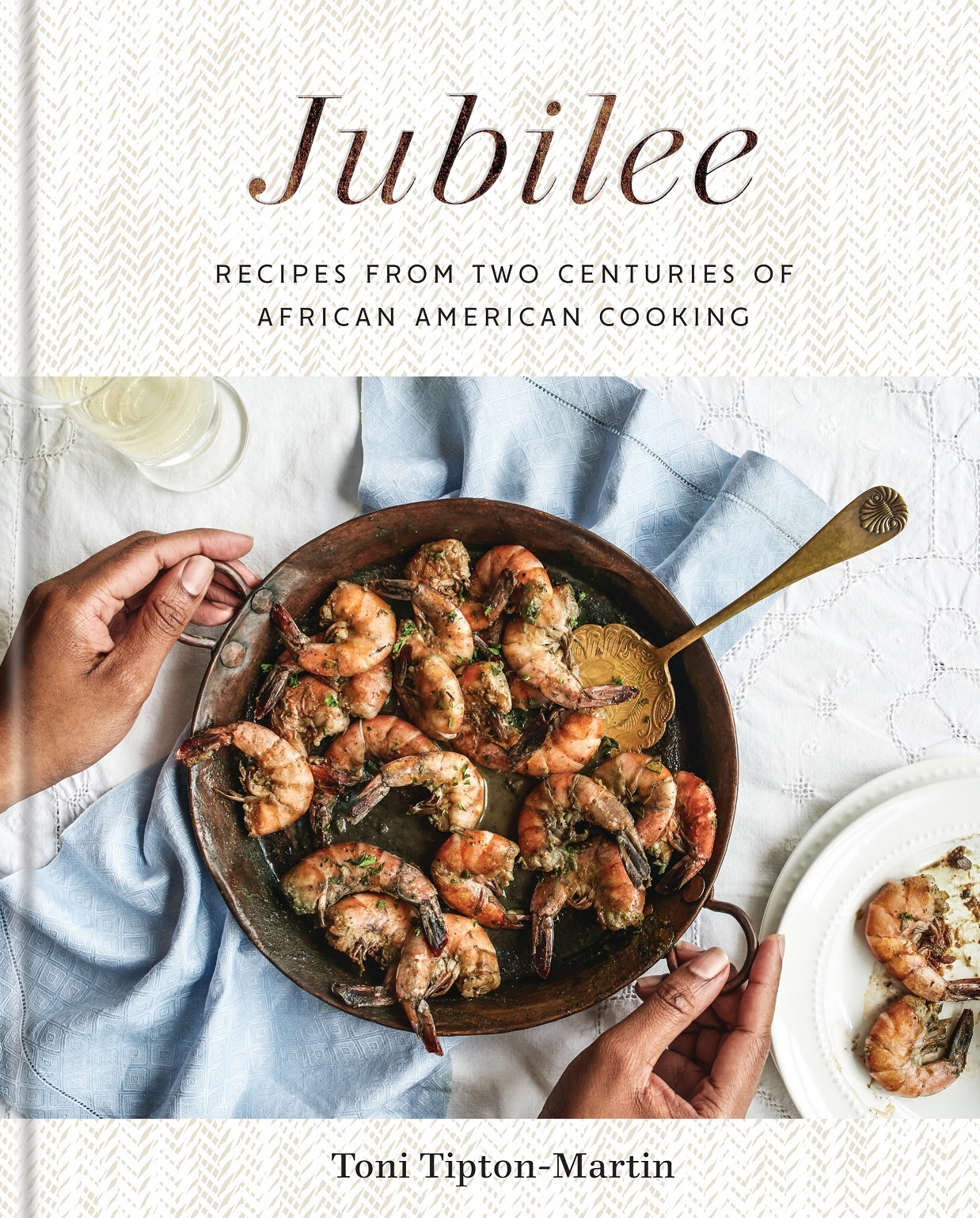
JUBILEE: Recipes from Two Centuries of African-American Cooking: A Cookbook
Toni Tipton-Martin
Clarkson Potter
November 5, 2019
$35/Hardcover
ISBN-13: 978-1524761738
Toni Tipton-Martin
Clarkson Potter
November 5, 2019
$35/Hardcover
ISBN-13: 978-1524761738
 Toni Tipton-Martin is a culinary journalist and community activist, and author of the James Beard Award-winning The Jemima Code. Her vast collection of African-American cookbooks has been exhibited at the James Beard House, and she has twice been invited to the White House to participate in First Lady Michelle Obama’s programs to raise a healthier generation of kids. Tipton-Martin is a founding member of the Southern Foodways Alliance and Foodways Texas.
Toni Tipton-Martin is a culinary journalist and community activist, and author of the James Beard Award-winning The Jemima Code. Her vast collection of African-American cookbooks has been exhibited at the James Beard House, and she has twice been invited to the White House to participate in First Lady Michelle Obama’s programs to raise a healthier generation of kids. Tipton-Martin is a founding member of the Southern Foodways Alliance and Foodways Texas.
Toni Tipton-Martin, the first African-American food editor of a daily American newspaper, is the author of the James Beard Award-winning The Jemima Code, a history of African-American cooking found in–and between–the lines of two centuries’ worth of African-American cookbooks. Tipton-Martin builds on that research in Jubilee, adapting recipes from those historic texts for the modern kitchen. What we find is a world of African-American cuisine–made by enslaved master chefs, free caterers, and black entrepreneurs and culinary stars. It’s a cuisine that was developed in the homes of the elite and middle class as well as in the living quarters of the enslaved; that takes inspiration from around the globe; that is a diverse, varied style of cooking that has created much of what we know of as American cuisine.
African-American cooking is almost always talked about as soul food, and yet its history is much richer, more varied, and deeper than that one story. In Tipton-Martin’s hands, the history of this food unfolds as one of skill and ingenuity, adaptation and inspiration. Tipton-Martin’s Jemima Code opened a conversation in the food world about the role of black cooks in American food. Continuing that conversation through the intimate, engaging form of recipes, Jubilee enlarges that discussion in a moment when the issue of African-American cultural ownership is a very relevant topic.
Drawn from her extensive research and collection (more than 300 volumes) of African-American cookbooks published over two centuries, Jubilee connects the historical and cultural threads that have formed the fabric of African-American cuisine.